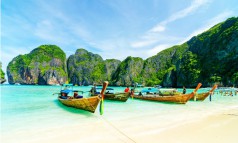



















Sunday, Nov 12, 2023 08:00 [IST]
Last Update: Sunday, Nov 12, 2023 02:31 [IST]
Nepalis living around the world belong to a diverse set of cultures and vibrant traditions and celebrate countless festivals throughout the year. Among these, Tihar, also known as Deepawali or Diwali, holds a special place in the hearts of Nepalis. This is a 5-day festival that showcases the rich cultural heritage of Nepal and one of the highlights of the festival is the traditional customs of Deusi Bhailo. In this article, we delve deeper into the meaning of Deusi-Bhailo and explore the festivals of Tihar. During the Tihar period, Deusi-Bhailo was widely worshiped by the Nepali-speaking people of India. The uniqueness of Deusi-Bhailo: Deusi-Bhailo traditions are deeply rooted in culture and heritage. Nepali products and authentic representation of the country's festivals. It has a remarkable originality and uniqueness that makes it an indispensable part of Nepali festivals, especially during Tihar. The uniqueness of Deusi-Bhailo lies in its cultural and social significance.



Ancient origin: Deusi-Bhailo is believed to have originated several centuries ago, and its origin is rooted in the traditional ancient mountains of Nepal. Singing and dancing to celebrate festivals such as Tihar has been passed down from generation to generation, making it a treasured custom that demonstrates the continuity of Nepali culture.
Region-specific variations: Although Deusi-Bhailo is celebrated throughout Nepal, the manner and style of celebration may vary from region to region. Different communities and ethnicities bring uniqueness to the songs, dances, and musical instruments used in the festival, contributing to their uniqueness and diversity.
Community Spirit: The essence of Deusi-Bhailo lies in its community-centered nature. People gather in groups, go from house to house, and share the joy of the festival. This community spirit fosters solidarity and strengthens social bonds, creating unique experiences that connect people across generations.
Expression of gratitude: During the Deusi-Bhailo festival, young artists dedicate their talents to entertain their families while bringing blessings and good wishes. In return, they receive rewards in the form of money or snacks. This tradition of expressing gratitude and receiving blessings is a unique feature of the practice, reflecting the values ??of respect and appreciation.
Musical Heritage: The musical aspect of Deusi-Bhailo is the essential element that makes it authentic and original. Traditional musical instruments such as the Madal and flute are played, and the songs have local flavors and themes, showcasing Nepal's rich musical heritage.
Preservation of folklore: Deusi-Bhailo songs often include folklore, myths, and moral messages passed down from generation to generation. The oral transmission of cultural stories and tales keeps the country's folk culture alive and vibrant.
King Bali and Deusi-Bhailo:
Baliraja, also known as Balihang, was a historical figure who ruled an important area in western Nepal in the 14th century. He was considered a legendary king and was respected in Nepali history. According to historical records and folklore, Baliraja was famous for his courage, wisdom, and righteous rule. He established a kingdom that covered the western regions of present-day Nepal, including areas such as Palpa, Gulmi, Arga, and Pyuthan. Baliraja's reign is often associated with stories of his military might and his efforts to protect his people and kingdom from external threats. He would protect the kingdom from invasions and ensure peace and prosperity in the region. Baliraja's legacy continues to be honored and revered in western Nepal, which is considered a symbol of leadership, and good governance. Various cultural and historical references to Baliraja can be found in local traditions, folklore, and festivals in the area. Historical information about Baliraja and his reign in the 14th century may vary depending on the documents and sources. Buldenggadhi is a historical site located in Palpa, a district in the Lumbini province of Nepal. Palpa is known for its rich historical, cultural, and architectural heritage. Buldenggadhi is a hilltop fort or fortress in Palpa's Tansen municipality. It has historical significance and is considered a symbol of the bravery and courage of the people of Palpa.
Baliraja and Vamana Avatar:
It is also important to note that the specifics and interpretations of the story of Baliraja and Avatar Vamana may vary across Hindu traditions and regions, but the central elements of the story remain consistent across different versions. There seems to be no direct connection between Baliraja and the Deusi tradition. Baliraja is a character in Hindu mythology associated with the story of Avatar Vamana. Hindus in India do not celebrate Deusi-Bhailo. The Baliraja connection to the Vamana Avatar remains questionable as Indian Hindus do not honor Deusi-Bhailo.
Conclusion:
In short, Deusi-Bhailo has a profound uniqueness that reflects the core values, cultural heritage, and traditions of Nepali people. Its long history, regional differences, community spirit, musical significance, and preservation of folk culture make it a true expression of the country's festivals. This treasured tradition is a testament to the cultural richness of Nepal and continues to play an important role in strengthening social bonds and promoting a sense of belonging among the Nepali people.
(The author is a communication expert.)
